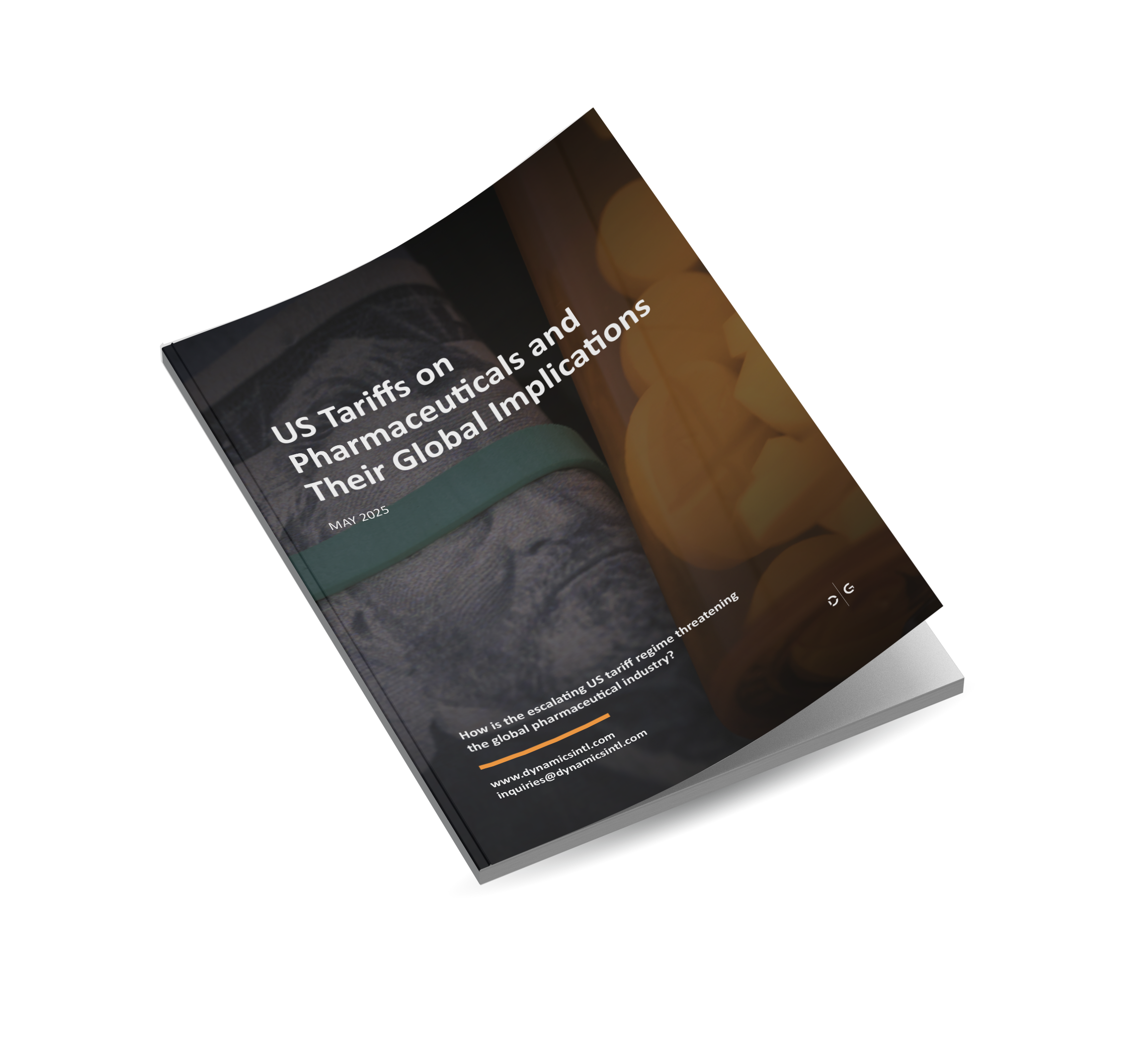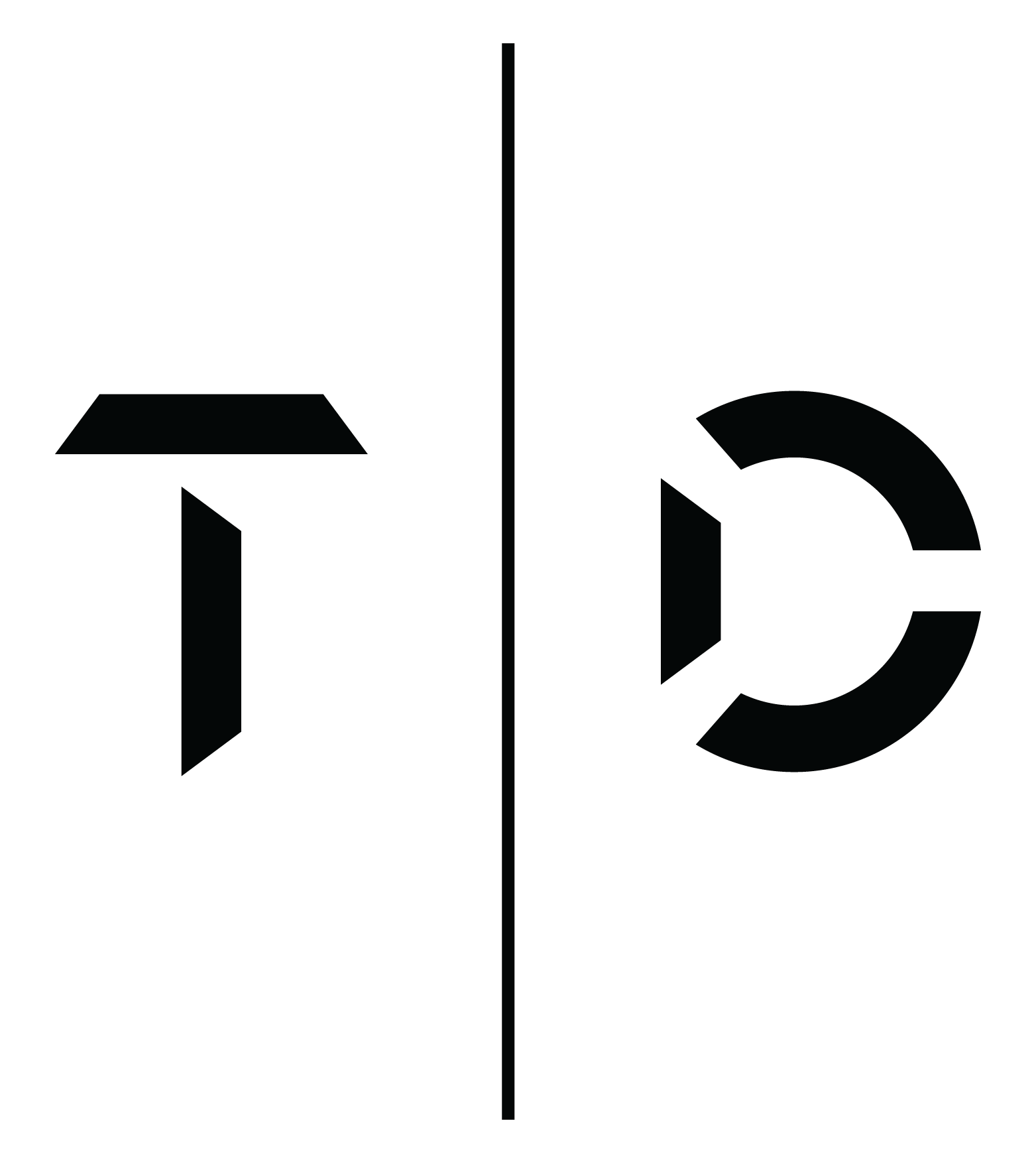Listen to the article – US Tariffs on Pharmaceuticals and Their Global Implications
Introduction
The escalating US tariff regime is a considerable threat to the global pharmaceutical industry, which currently stands at approximately USD 1.6 trillion in revenues. Although medicines were initially spared, recent rhetoric and early policy signals indicate that pharmaceuticals, medical components, and intermediate goods will likely soon be subject to punitive tariffs and are already announced by the US President. These tariffs targeting the pharmaceuticals are set to disrupt production, inflate costs, destabilize supply chains, and fracture transatlantic trade cooperation. The United States remains the largest export market for global pharmaceutical producers, nevertheless the threat of tariffs means that the sector faces an impending period of volatility, realignment, and strategic uncertainty.
The Pharmaceutical Sector Braces for US Tariff Escalation
The Pharmaceutical Sector Braces for US Tariff Escalation
The global pharmaceutical industry currently finds itself in an increasingly precarious position due to a shift in US trade policy under Trump’s administration, who has embarked on a sweeping and aggressive tariff campaign against major trading partners, globally. What initially appeared as a primarily industrial-focused policy with tariffs targeting steel, aluminum, automotive parts, has rapidly broadened its scope to include critical sectors like pharmaceuticals. At the beginning of April 2025, Trump has publicly announced a 20 percent tariff on a wide range of products and a punitive tariffs on select exports. While pharmaceuticals were initially spared, few days later the US President announced that large-scale tariffs on pharmaceutical goods were being planned as well. Trump himself emphasized the coming measures would be of “a scale never seen before,” a rhetoric that has significantly destabilized market confidence and prompted immediate corporate and policy responses.
This tariff expansion is already affecting the pharmaceutical supply chain in several critical ways. While finished pharmaceutical products are not yet directly tariffed, intermediate goods and other inputs essential for drug manufacturing are likely to become subject to higher import duties. These components are vital to production continuity, and their increased cost or restricted availability could significantly impair the pharmaceutical manufacturing capacity. This pressure compounds existing structural challenges, such as chronic drug shortages in select regions with medicines already in limited supply. Concerns about supply chain resilience and operational viability are further echoed by sector stakeholders, who highlighted the risk of continued dependency on a trade relationship with an increasingly unpredictable United States. They warn that sustained economic uncertainty caused by erratic tariffs could deter investment, delay innovation, and further destabilize pharmaceutical logistics prompting pharmaceutical companies to direct their operations in the US.
The response among European pharmaceutical firms has been swift and preemptive. Companies have significantly ramped up exports to the US via air freight in an attempt to front-load inventories before potential tariffs take effect. Global logistics providers report a marked increase in pharmaceutical shipments across the Atlantic, with Lufthansa confirming accelerated supply chain activities driven by tariff anticipation. This “just-in-case” behavior underscores the seriousness with which the pharmaceutical industry is interpreting Trump’s threats. Simultaneously, capital markets are reacting with alarm. Pharmaceutical giants around the globe experienced immediate and substantial losses in share value after the tariff threats were made public. In addition, India’s leading pharmaceutical executives cautioned against letting proposed US import tariffs dictate business strategies, emphasizing the long-term risks of reacting prematurely to politically driven trade measures. The sell-off reflects investor fears that high-margin export revenue from the US could be significantly eroded or that retaliatory responses from global trading partners could further damage business outlooks.
From a political standpoint, the European Union has also expressed concern. The European Commission’s President in an address in the European Parliament denounced the proposed tariffs and emphasized that such trade measures effectively constitute taxation on essential goods, including medicines for American consumers. Von der Leyen has called for negotiations but has also made clear that the EU is preparing countermeasures, including retaliatory tariffs and possibly levies on digital services provided by US tech firms. German Economics Minister Robert Habeck has advocated for a deeper reform of the EU internal market to reduce dependency on US trade, suggesting that new alliances could help build a more diversified trade framework.
How can we help?
Intelligence Solutions
The combination of business, market and strategic intelligence ensures result-driven outcomes for our customers.
Risk management
Risk management through the responsibility of taking risk ownership while ensuring safety and security
Furthermore, pharmaceutical trade data highlights the gravity of the threat and also shows that the US is heavily reliant on certain European countries for pharmaceutical imports (Ireland, Germany, Switzerland, Netherlands, Belgium, UK, Italy), alongside India as a major non-European supplier. Other European countries similarly rely on the US for their pharmaceutical exports as well as imports. This mutual dependency reveals the deep integration of transatlantic pharmaceutical supply chains, and how vulnerable they are to unilateral trade interventions.
In conclusion, while formal tariffs on pharmaceuticals have not yet been enacted, the convergence of policy rhetoric, intermediate goods tariffs, supply chain reactions, and political statements strongly indicate that the global pharmaceutical industry is already under tangible stress. The present situation is one of acute uncertainty, driven by geopolitical trade policy decisions that risk fragmenting one of the world’s most interdependent and innovation-driven sectors.
Toward a Fragmented Pharma Future
Toward a Fragmented Pharma Future
The global pharmaceutical industry will likely face mounting disruption as the US edges closer to implementing tariffs on pharmaceutical goods and related supply chains. US’ President explicit warning of impending tariffs on pharmaceuticals, followed by an announcement of such action, signals a policy shift that could fundamentally reshape global drug trade dynamics. While the present impact is still contained within anticipation and preliminary logistical shifts, the future could bring systemic trade distortions, regulatory fragmentation, and sustained supply volatility across transatlantic markets.
Strategically, the greatest risk lies in the erosion of predictability. If tariffs are applied directly to finished pharmaceutical products, high-cost drugs will likely become significantly more expensive in the US, likely impacting market access and pricing negotiations. Countries with heavily export-oriented pharmaceutical sector will likely encounter shrinking profit margins and recalibrated global production strategies. These states, already under pressure to ensure stable supplies and retain manufacturing competitiveness, may find their healthcare sovereignty compromised by increased reliance on politically volatile trade relationships.
At the policy level, sustained tariff escalation could accelerate legislative and regulatory countermeasures in Europe and beyond. EU’s Commission President suggestion for retaliatory instruments indicates that pharmaceutical tariffs will likely not exist in isolation but rather as part of a broader trade conflict. As such, the sector risks becoming collateral in a tit-for-tat economic confrontation that spans multiple industries. This would compound operational complexity for multinational pharmaceutical companies, forcing them to reassess US-focused expansion, R&D investment allocations, and global supply routing.
A probable future outcome is the recalibration of manufacturing footprints. Faced with uncertain access to the US market, pharmaceutical firms may be compelled to localize production in North America, not for cost efficiency, but as a geopolitical hedge. This shift would likely be especially challenging for highly regulated, capital-intensive biologics and specialty drug segments. Additionally, governments in key exporting nations will likely come under public pressure to introduce incentives for domestic production resilience, particularly for essential or high-demand medications, which could be a more insular and fragmented industry landscape, undermining the efficiency gains of globalization.
Download Report
US Tariffs on Pharmaceuticals and Their Global Implications
How is the escalating US tariff regime threatening the global pharmaceutical industry?
Moreover, market volatility is expected to intensify. Investor confidence in pharmaceutical equities which are already shaken by tariff threats may decline further, particularly for companies with disproportionate exposure to US revenue streams. The recent drop in share prices of major pharmaceutical firms is likely a prelude to broader capital market instability if the tariff regime materializes. The sector may also see a shift in pricing dynamics within the US itself, as insurers, hospitals, and patients absorb the downstream effects of import costs.
Overall, the pharmaceutical industry’s future under the current US tariff strategy points toward increased fragmentation, diminished global integration, and rising uncertainty. What emerges is not simply a trade dispute, but a strategic inflection point that could redefine pharmaceutical geopolitics—where access to medicine, supply chain sovereignty, and health innovation are shaped less by science and more by diplomacy and power politics.
The Global Fallout of US Pharmaceutical Protectionism
The Global Fallout of US Pharmaceutical Protectionism
The imposition of US tariffs on pharmaceuticals and related inputs will likely produce a cascading set of consequences across global health systems, market structures, and strategic industrial capacities. Such systemic risks will likely destabilize public health outcomes as well as pharmaceutical innovation ecosystems. The expected increase in production costs, disruptions in supply chains, and deterioration in transatlantic trade relations will manifest in substantial operational, strategic, and financial stress across the pharmaceutical value chain.
From an industrial standpoint, the imposition of tariffs on pharmaceutical products and intermediary goods will likely raise input costs and introduce delays, particularly for those exporters that are heavily reliant on access to the US market. Tariffs will likely undermine this trade corridor, forcing firms to either absorb costs, pass them on to consumers, or reconfigure production and distribution strategies, none of which offer efficiency or predictability. Moreover, the financial market has already begun pricing in the geopolitical risk. Pharmaceutical giants experienced sharp stock declines mounting up to five percent following President Trump’s threat to impose “unprecedented” pharmaceutical tariffs. Such investor reactions underscore the perceived volatility and profit margin compression that firms anticipate under this evolving trade regime. These dynamics are not merely speculative; logistics providers (Lufthansa Cargo and DHL) have reported notable surges in air freight demand as pharmaceutical companies scramble to front-load exports to the US ahead of potential tariff implementation, increasing operational costs and tightening transportation capacity.
How can we help?
Intelligence Solutions
The combination of business, market and strategic intelligence ensures result-driven outcomes for our customers.
Risk management
Risk management through the responsibility of taking risk ownership while ensuring safety and security
Information Technology
Integrated systems based on optimized hardware, smart automation and the latest software solutions.
Strategically, the threat of tariffs on pharmaceutical products signals a paradigm shift in the global trade order, where life sciences which are traditionally treated as protected or exempt sectors, are now being politicized and instrumentalized as leverage in trade protectionism and geopolitical contests. This creates lasting uncertainty for investors, R&D partnerships, and cross-border regulatory cooperation, resulting in intensified supply vulnerabilities and creation of unnecessary bureaucratic burdens, complicating regulatory harmonization and joint health initiatives between trading partners. The prospect of retaliatory measures from affected countries or counter-tariffs on US pharmaceutical imports will likely fragment global pharmaceutical trade networks further. The specter of bifurcated supply chains would introduce long-term structural inefficiencies, particularly in highly globalized sectors like biotechnology, where cooperation on clinical trials, licensing, and drug approval pipelines is essential for both innovation and patient access. Countries like Switzerland, whose pharmaceutical exports to the US accounted for 27 percent of total pharma exports in 2023, would face acute exposure, potentially prompting a reallocation of industrial capacities and export strategies toward Asia-Pacific or domestic European markets.
Beyond economics, the politicization of pharmaceutical trade amplifies the risk of undermining global health security. Disrupted access to critical medications, especially cancer treatments and chronic disease therapies, will likely have adverse effects on health systems already strained by aging populations and post-pandemic recovery demands. These disruptions would not remain confined to Western economies; many emerging markets that rely on transatlantic pharmaceutical trade for their own medicine supply chains could also face shortages or cost surges, intensifying global health inequalities.
Ultimately, the impact of US pharmaceutical tariffs will likely extend far beyond trade balances. They risk distorting market dynamics, triggering retaliatory policy spirals, and destabilizing the collaborative foundations on which global public health system rests. The strategic calculus behind such measures may yield short-term political gains but at the potential expense of long-term systemic resilience in the life sciences sector.
The Risks of US Tariffs on Pharmaceuticals
The Risks of US Tariffs on Pharmaceuticals
The risks associated with the potential imposition of US tariffs on pharmaceutical products are multifaceted and are touching on everything from supply chain disruptions to geopolitical tensions. These risks manifest not only within the pharmaceutical industry itself but also in broader economic and strategic contexts. A primary concern lies in the uncertainty introduced into global pharmaceutical supply chains, which could become increasingly fragmented. The EU, a major exporter of pharmaceuticals to the US, is already seeing an uptick in pharmaceutical shipments by air freight, as companies prepare for potential tariff-induced disruptions, adjusting their logistics strategies in anticipation of tariffs, a response that underscores the rising concerns over supply chain reliability.
Download Report
US Tariffs on Pharmaceuticals and Their Global Implications
How is the escalating US tariff regime threatening the global pharmaceutical industry?
A key risk centers on the potential for price increases due to tariffs. For companies that heavily rely on exports to the US, tariffs would likely significantly increase production costs. This, in turn, could lead to higher prices for consumers, ultimately making essential medications less affordable. The added burden could also dampen innovation, as R&D funds may be diverted to absorb the increased operational costs caused by tariffs. Pharmaceutical companies could be forced to scale back on investment in new drug development, thereby delaying the availability of innovative treatments and therapies.
Moreover, the imposition of tariffs could exacerbate existing vulnerabilities within the global pharmaceutical supply chain. The sector is already struggling with instability, marked by a continuous shortage of key medicines in various regions, including Europe. The introduction of new barriers to trade will likely exacerbate these shortages, particularly for critical drugs that depend on materials or components imported from other countries. For example, pharmaceutical production often relies on specialized intermediate products such as sterile tubing, which are sourced from the US and other global markets. The imposition of tariffs on these essential inputs will likely disrupt production timelines, leading to delays in manufacturing and potentially severe shortages in the supply of life-saving drugs.
Geopolitically, the tariffs could fuel existing tensions between the US and key trading partners. As European countries face the brunt of the tariffs, retaliatory measures are increasingly likely. The EU and other US trading partners have already signaled that they will respond decisively, with similar countermeasures. Such actions will likely lead to a protracted trade war, which may not only hurt the pharmaceutical industry but could also spill over into other sectors, creating widespread economic instability. In the longer term, the global nature of pharmaceutical production and trade means that the risks could extend beyond the US and EU, potentially destabilizing trade relations with countries in the Asia-Pacific region, which are major hubs for pharmaceutical manufacturing.
Additionally, the political risk cannot be underestimated. If tariffs are used as a tool of economic warfare, they could result in a loss of trust between countries that are currently major players in the global pharmaceutical market. For example, the US may alienate Switzerland or India, crucial partners in global pharmaceutical exports, which could seek to diversify their trade relations away from the US. The growing volatility in trade relations may also encourage countries to pursue more protectionist policies of their own, leading to a “tit-for-tat” escalation in global trade barriers.
In conclusion, the risks of US pharmaceutical tariffs are vast and interconnected. From economic instability within the pharmaceutical sector to broader geopolitical tensions, the global ramifications will likely be severe. As companies adjust to the evolving trade environment, the pharmaceutical industry will need to navigate a host of challenges, including higher production costs, supply chain disruptions, and the potential for retaliatory measures from affected countries. In a worst-case scenario, this could lead to a fundamental reshaping of global pharmaceutical trade and market access, with long-term consequences for healthcare systems worldwide.

ARTICLE | 19 PAGES






